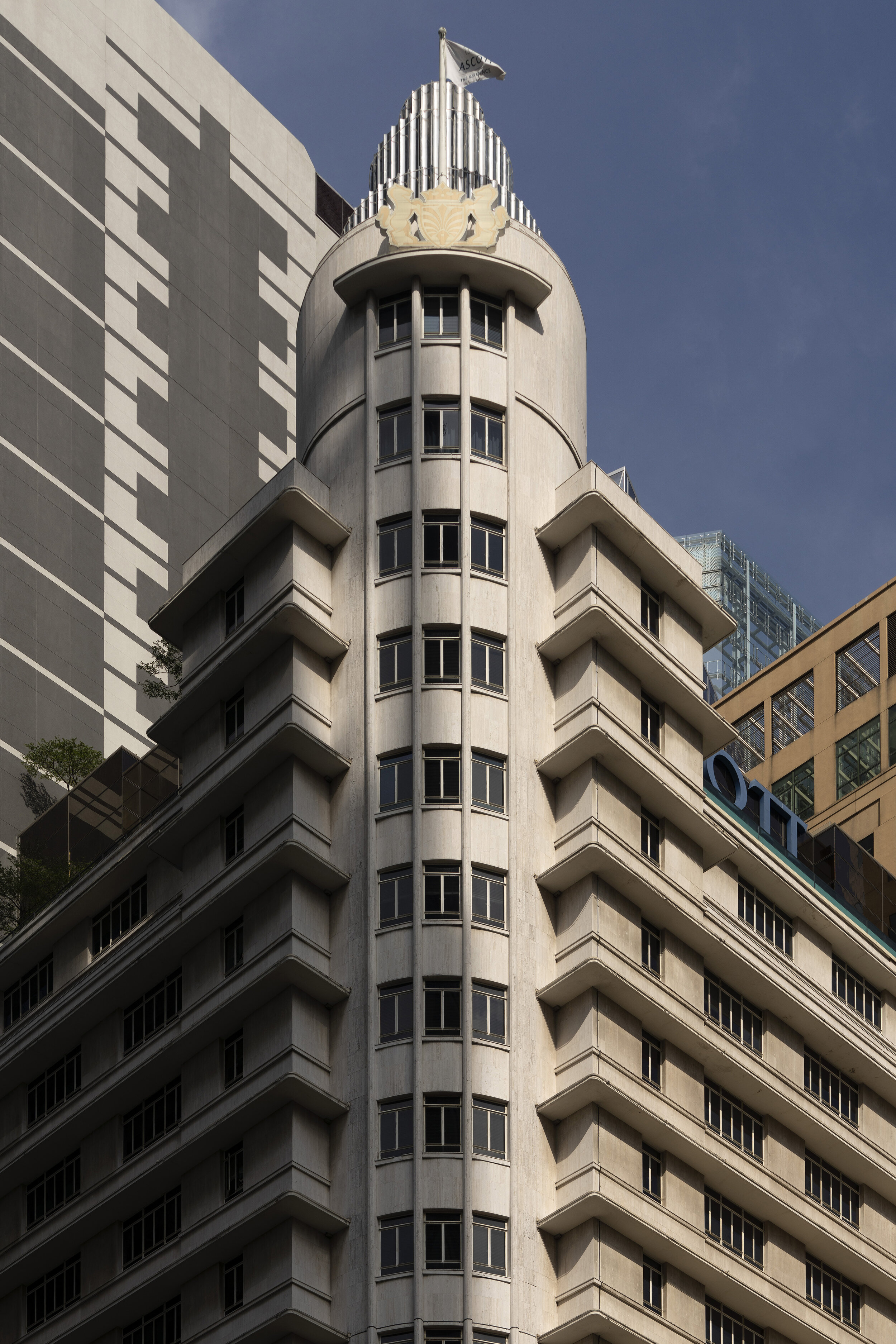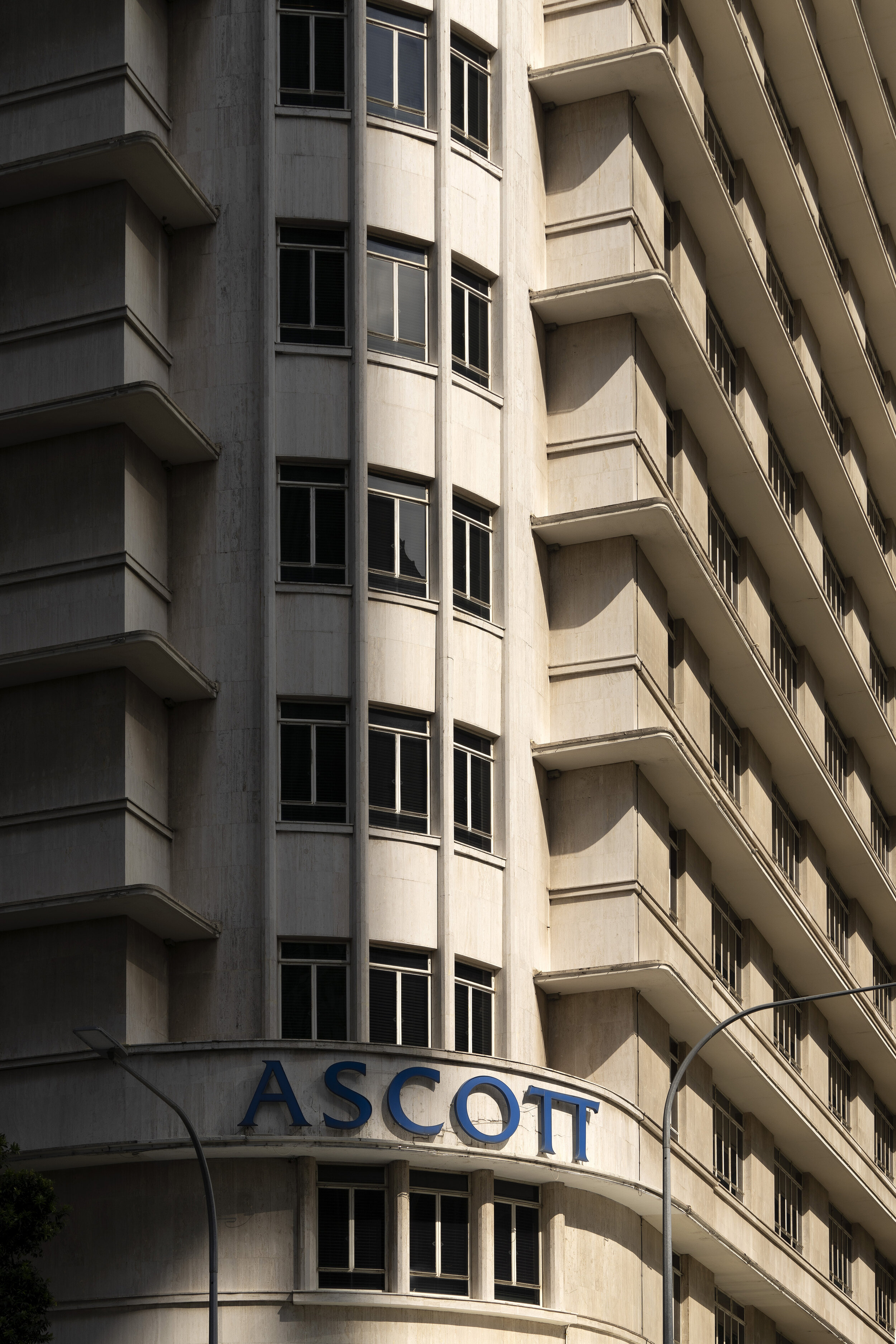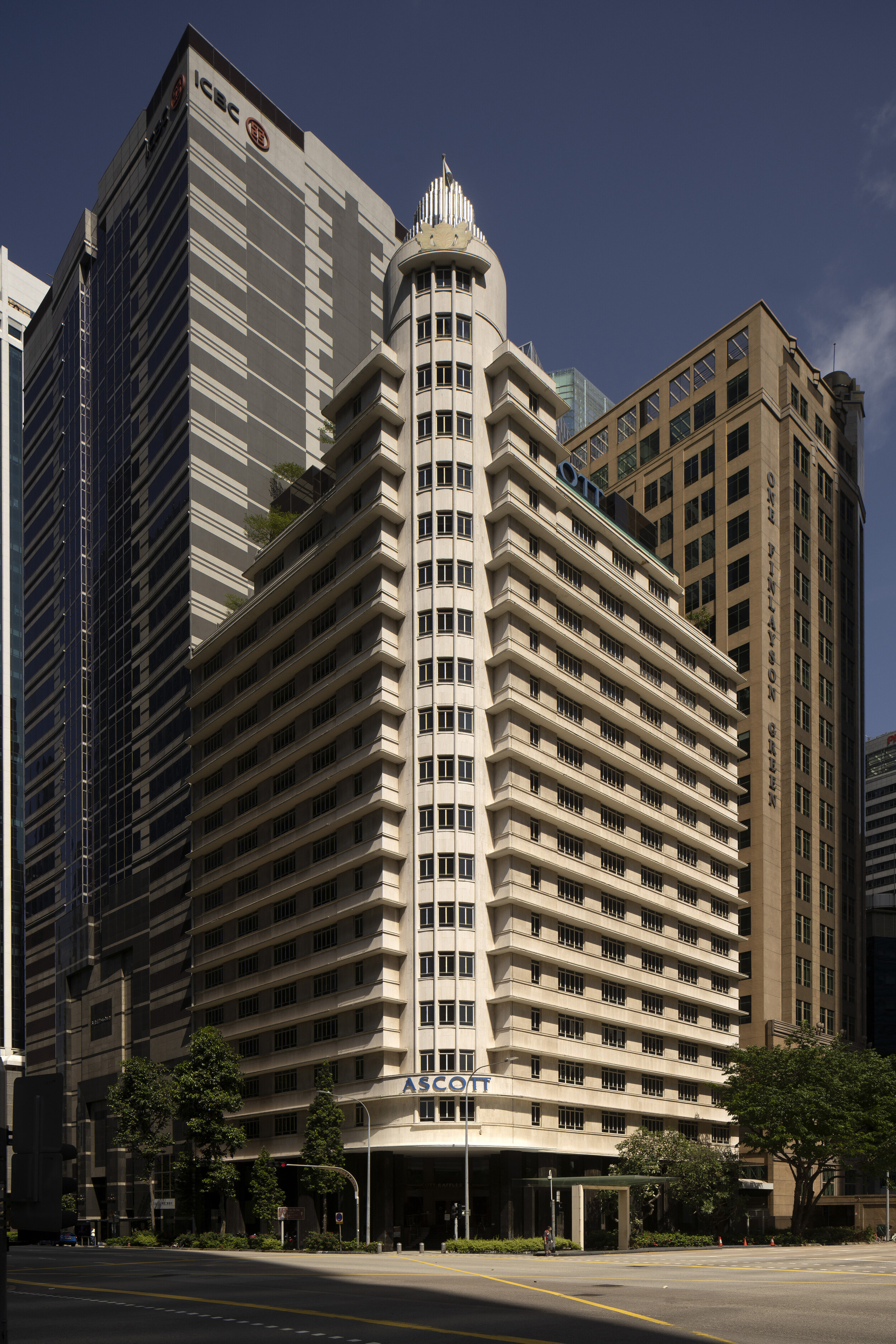Asia Insurance Building
Asia Insurance Building was designed by London-trained local architect Ng Keng Siang, who was among several pioneer architects to be first conferred membership to the Royal Institute of British Architects in Singapore. Designed in the Art Deco style, it served as the headquarters of the Asia Insurance Company, one of Singapore’s first homegrown insurance businesses. The architecture follows an L-shaped layout, topped with a two-storey corner tower and a three-tiered stainless-steel crown that marks Queen Elizabeth II’s coronation in 1953. Its facade is characterised by repetitive rows of window openings and continuous ledges that serve as sun-shading. Fins clad in travertine marble impart sophistication and prestige to the Asia Insurance Building, which remained the tallest skyscraper in Singapore for nearly a decade after its completion. Meanwhile, the building’s five-foot-way is covered in Nero Portaro marble, a rare type of black Italian marble with white and gold veins.
The building was sold in 2006 to The Ascott Group, who spent S$60 million on its refurbishment and conversion into a 146-unit serviced residence. Most of the historic architectural elements were retained and restored, including the original brass mail chute (designed by James Cutler), the mosaic staircase, and timber railings. Existing window frames with brass handles were preserved, but the windowpanes were replaced with new glass panels to meet present-day requirements. Asia Insurance Building was gazetted for conservation in 2007.
Location: 6 Raffles Quay, Singapore 048580
Architects: Ng Keng Siang
Year: 1955
Status: Conserved in 2007
Last modified on 12 May 2021. Description by Ho Weng Hin.




